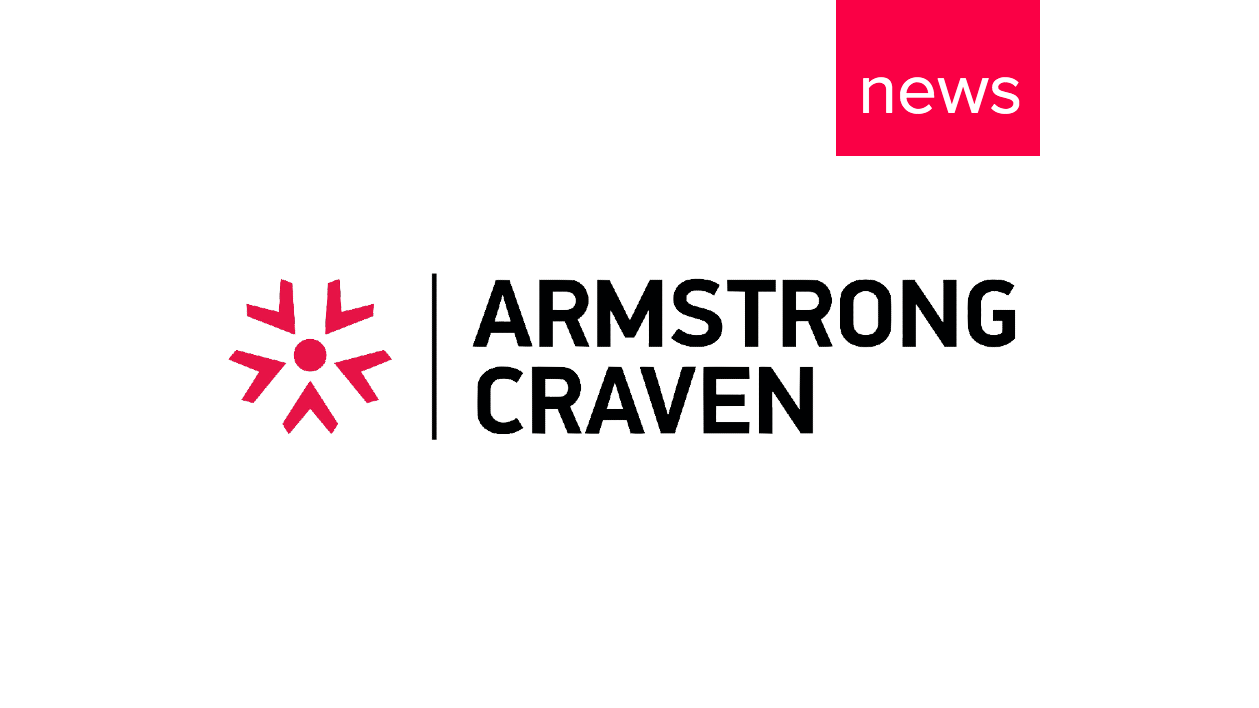How Talent Pipelining Can Increase Bench Strength
09 Apr, 20216 min
Talent Pipelining is the art of planning. Quite simply, if you plan today, you will be able to secure the people you'll need tomorrow.
At Armstrong Craven, we believe people are your greatest asset, and Talent Pipelining is particularly useful when looking towards the future and those who will be part of it.
Talent Pipelining can be applied in various ways, but it is arguably the most beneficial when being perceived through the lens of bench strength. Exploring the question of 'if we had any departures in the leadership team, do we have the right people, with the right skills ready to step up and replace them?'
Talent Pipelining is utilised by forward-thinking HR and business leaders who are asking the crucial questions about business continuity and succession planning, looking at skills shortages, diversity representation and then using this information to recruit proactively.
Identifying gaps in succession
In assessing bench-strength, you'll be aware of who's coming up internally through the ranks. The question for any HR and business leaders is, are they ready for the next role now, or soon enough to be part of your immediate succession planning?
More often than not, there can be a big gap between the C-suite's needs over the next few years and that of the next wave of leaders. There may also be a lack of diversity in that group which demands external succession planning. This can be diversity of industry experience and skills just as much as ensuring your team includes talent from typically underrepresented groups.
Taking the next steps
If you've determined that you don't have the right people internally for these positions, you may not want to do a full executive search because (a) you don't have an immediate vacancy and (b) it's a costly way of engaging with professionals where circumstances might change drastically. This is where Talent Pipelining comes in.
You'll want to know what the external market looks like: Who are the natural successors currently working for your competitors? Where may other candidates currently be working beyond your established networks and traditional competitors who you may not have considered before? Could you achieve greater diversity by hiring from other sectors?
There may be someone who's joined a competitor recently who's been very successful but has been flying under the radar. The old saying "you don't know what you don't know" applies here, and most businesses have a significant talent 'blind spot' as they have never looked at the broader talent landscape. The traditional executive search process can come up short here, with many headhunters utilising a black book approach which narrows your search considerably.
The first action is to identify who the potential successors might be.
Knowing who your potential successors are has a multitude of benefits, which can be actioned immediately. Say these people are currently in another sector or industry, but they possess the skill set you desire - then you can look at what their drivers and interests may be and what you can offer to make moving to your business highly attractive.
It gives you time to explore how your compensation and benefits compare and if there is an opportunity to improve your offering.
Understanding what may be attractive to a candidate will allow you to plan
When you look at the executive benefits package, the salary and bonus potential are just the start. Candidates from other sectors, and maybe even locations, will want to know how taxation could impact their earning potential (if moving between countries). They will also want to know how long term incentive schemes are structured. Just as importantly, a move into a new sector will prompt questions around company culture and if there are other instances of candidates moving into the leadership team from other industries and how successful (or not) those moves have been.
When hiring from other sectors, understanding candidate motivations and concerns needs to play even more of a significant part in facilitating a move. Additional time and support need to be factored in for onboarding and help a new leader navigate the organisation to ensure success.
The Talent Pipelining process
Just like any process, Talent Pipelining for succession has a number of vital steps:
1. Assess the gap
HR and leaders often consider bench strength and review the ability for executives further down the ranks to step up to the next level. There is often a gap, either in technical or the softer leadership skills which is considered, but often there is a more critical strategy gap to consider. If your business has recently undergone significant digital transformation for example, the roles in your leadership team may have changed. An assessment of how the role itself has changed as much as the capability of the individuals in internal succession is required for talent pipelining to be successful.
2. Understand the succession path
Succession planning isn’t just about finding the next person to move into the role. Good succession and talent pipelining should factor in what the path to succession should look like. If you were to identify an excellent external candidate for succession, but the incumbent will be in the role for at least the next 6 to 12 months, there may be other roles within the leadership team they can take up first in preparation and to ease their introduction into the business.
3. Review the landscape
Going out to market for succession can be challenging for many businesses, and while there is an appetite to connect with external candidates to understand suitability for the role and interest in considering it, there is often hesitation over confidentiality.
Where executive search firms are used to deliver a qualified shortlist, typically for an immediate need, Armstrong Craven offers a deconstructed version of the search process to suit succession planning.
Following a thorough brief to understand the business context, we identify the total addressable talent landscape, factoring in diversity and changing business requirements. We then review the talent landscape and agree on an engagement strategy to prioritise target candidates, agree on confidentiality and confirm the message to market.
4. Introduce succession options
We engage with talent, qualify their skills and experience and validate their goals and potential interest in forming part of your external succession plans. We then present succession options, agree on next steps and a timeline for an introduction, using non-disclosure or confidentiality agreements as required.
The process can take a matter of weeks where needed to introduce prospective external succession options quickly. In longer term planning and at more senior levels, this can be a more gradual process with socialisation with succession candidates taking place over a number of months. It isn’t rare for our clients to commence talent pipelining projects months in advance which then result in hires up to a year later to meet business requirements.
Other factors to consider
Talent Pipelining isn't just about, increasing diversity and ensuring succession is in place for key roles. 2020 has been a year of change, highlighting the value of forward planning and being prepared beyond just replacing outgoing leaders.
It's about ensuring you are ready to thrive in unexpected circumstances. Talent Pipelining, when done correctly, can look at "what happens if" scenarios and factors, such as changing retirement planning and unexpected absence or departures within your leadership team.
Indeed, Chief Risk Officers are more frequently looking into the human risk of the leadership team. Talent pipelining can also look at changing skills and experience requirements to match shifts in the market and how this should impact your succession and continuity planning.
Every action you take should be looking towards lowering the risk to your business's future. Many industries are forward-thinking and have robust plans in place for events like natural disasters, power outages, threats to employee safety etc., and planning for unexpected events relating to key individuals in the business should also be paramount.
Many leaders are now being held to account by Chief Risk Officers for leadership risk and have to have robust plans for key executives being unexpectedly unable to continue in their position.
Why should you utilise Talent Pipelining over the traditional Search process?
Using full Search is expensive.
Just like Search, Talent Pipelining can be confidential, considered and controlled. You'll get the results you need at the pace you want to work. But unlike Search, it is proactive. It allows you to plan for the future, goes beyond the black book approach of a traditional search firm, giving you a full view of the market and its potential talent, and cost-effectively achieves this.
The benefits of Talent Pipelining:
Planning saves time, money and manages risk for the future
Developing a talent pipeline requires you to shift from a reactive to a proactive mindset. Making changes now, for the future, will save you time in the long run. You'll be able to attract the candidates you desire, having considered their needs in advance - alongside having a full view of the talent landscape from the beginning.
It is cost-effective
Finding people to fill high profile positions can be very expensive. Talent Pipelining removes some of the financial pressure associated with executive appointments. You're looking beyond the black book analogy and are getting a full view earlier on in the process. Talent Pipelining is about engaging now with the people who will run your business in the future.
It's completely confidential
Talent Pipelining is conducted confidentially. Looking for future talent can be sensitive, and news about the search should be controlled, restricted as much as is needed and managed in the right way. We're on a journey with you and want you to feel reassured that you can trust us. In the same process as an executive search, Non-Disclosure Agreements can control the level of confidentiality required.
We help business leaders to integrate Talent Pipelining seamlessly into their overall business strategy. Get in touch to speak with our experts and see how we could be helping you plan for the future, today.
Speak with an expert
If you want to learn a little more about what we do and how talent research can help you make better-informed business decisions, our team of talent research and consulting specialists are happy to help.







